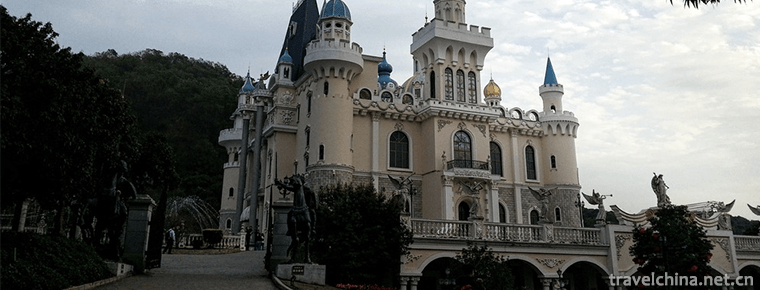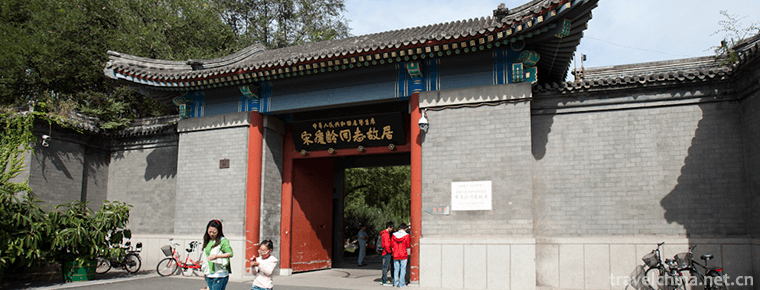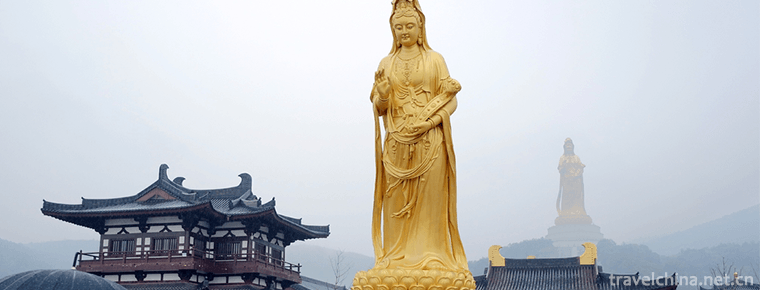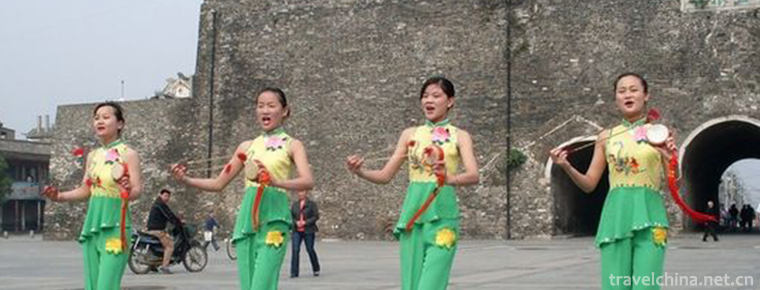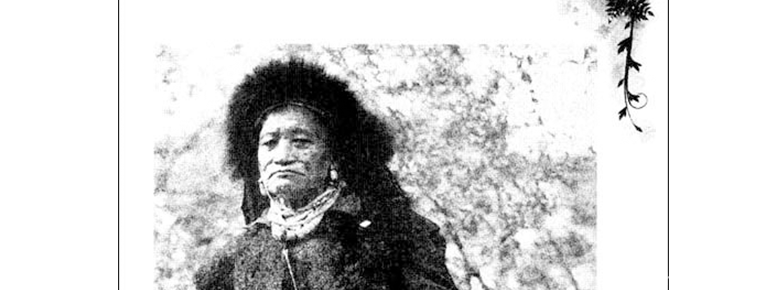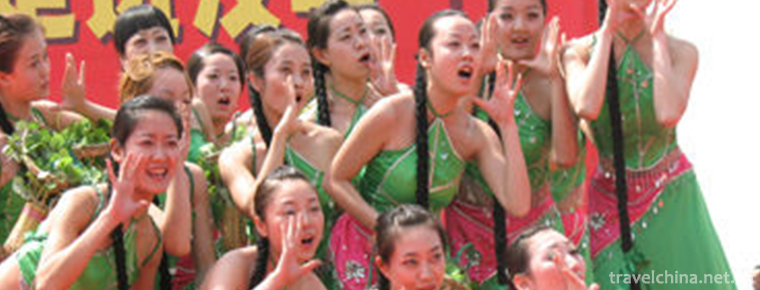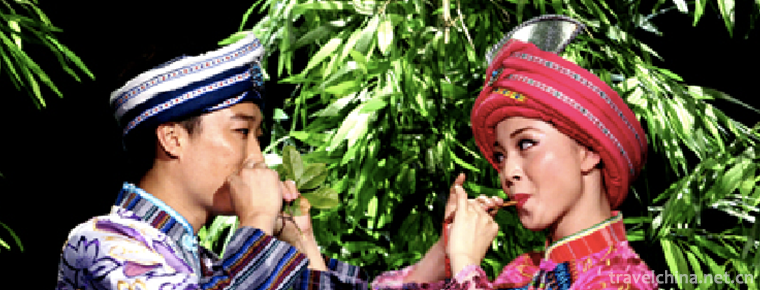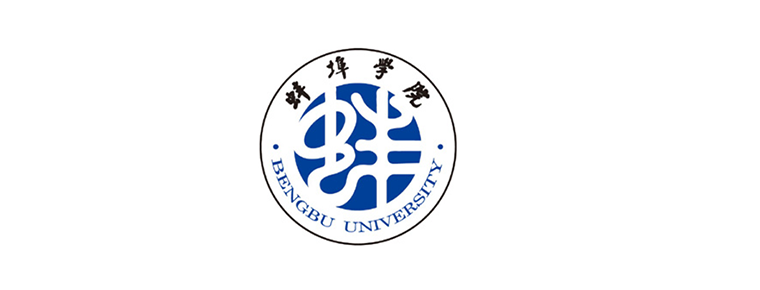Korean Costume
Korean Costume
Korean costume, Korean traditional folklore, one of the national intangible cultural heritage.
Korean men's clothes are short, trousers are long and fat, and they wear shoulder jackets. There are also people wearing robes or Korean robes outside. Taoist robes used to be the common clothes of scholar-bureaucrats and Confucian scholars, and later became the formal clothes of men when they went out. The long gown can be worn as an overcoat, which can be divided into single, clip and cotton.
Korean women's short dress and long skirt. The jacket has a long white cloth belt bowed under the right shoulder. Long skirts often have long wrinkles. Skirts can be divided into twisted skirts, tubular skirts, long skirts, short skirts and aprons. Short clothes, called "Zegouli" in Korean, are a kind of clothes with sloping collars, buttons, knots and only covering the chest; long skirts, called "Chema" in Korean, have thin folds around the waist, loose and elegant. This kind of clothes are mostly made of silk and have very bright colours. Young women generally like to wear tube skirts and short skirts. Older women often wear twisted skirts and long skirts. In winter, middle-aged and old women wear cotton (leather) shoulders over their jackets.
On June 7, 2008, Korean costumes were approved by the State Council and included in the second batch of national intangible cultural heritage list.
historical origin
Most of the Korean people in China were a minority group gradually formed by Japan as a political immigrant from the Korean Peninsula during the period of the occupation of Northeast China. Clothing is a symbol of national culture. The Korean nationality is one of the minority nationalities in China. It mainly lives in Yanbian Prefecture, Jilin Province. Its rich and colorful national costumes reflect the ideology and spiritual features of the Korean people. Its culture is deeply rooted in the Korean Peninsula culture. Korean costume shows the characteristics of plain, elegant and light, which not only brings us the enjoyment of beauty, but also enriches the treasure house of costume art.
At the end of the Three Kingdoms, aristocratic men wore wide trousers, short jackets and waistbands; aristocratic women wore long skirts and hip-length jackets. Afterwards, influenced by Mongolia, women's jackets were shortened and waists were mentioned in skirts. In the 15th century, women's skirts were raised again, tied under their armpits, and their jackets were shortened, similar to Korean costumes worn by women today.
In the early days, the Korean people in China mostly lived in remote mountain villages, and their clothing materials mainly consisted of self-woven linen and earthcloth. At the beginning of the 20th century, with the penetration of capitalist economy and the importation of modern culture, woven fabrics, silk, satin and other fabrics began to be introduced, and the color of clothing also diversified. Especially since China's reform and opening up, economic and cultural exchanges with North Korea and South Korea have been strengthened, which has further promoted the development of Korean clothing.
Clothing characteristics
population
After immigration into China, the Korean people's clothing mostly used Korean Li Dynasty folk clothing, and there are daily clothes, ceremonial dresses (wedding, funeral, sacrificial ceremony, etc.), special clothes (dance clothes, farm clothes, etc.) and other clothes. Korean people prefer plain white clothes, so they are called "white clothes nation". Korean costumes are characterized by sloping skirts, no buttons and knotted with long cloth belts. Women's traditional daily clothes are short clothes ("Gauli"), long skirts ("Qi code"), slanted bottoms, and bows with long cloth straps under the right shoulder. Men's clothes are short jackets with shoulders, pants with wide legs under them, and long gowns with diagonal plackets tied with cloth bands when going out. Now change your uniform or suit. Girls and young women's dresses, colorful and bright, with strong national characteristics, children's jacket sleeves are mostly made of "seven-color satin" (seven color matching satin), dressed like a rainbow in the body. Young women and girls have bright-coloured silk and satin edges at the cuffs and skirts of their jackets. The ribbon is also made of red, purple and blue silk and satin. Old women like white skirts and are used to wrapping their heads in white cloth. In winter, they wear silk shoulders with sweaters as lining. Middle-aged and old women often wear wrapped skirts instead of barrel skirts. In the early period, the Korean people wore clogs and leather shoes. Later, they also wore straw shoes, flax shoes and rubber shoes. Now they generally wear cloth rubber shoes or leather shoes.
Traditional men's wear
Korean men usually wear plain jackets with shoulders and pants with wide legs. When going out, wear long gowns knotted with cloth bands. Men's jackets are also called "Zegouli" in Korean. Adult men's jackets are shorter, with sloping skirts, wide sleeves, left jackets and no buttons. There is a ribbon on each side of the front, which is tied above the right skirt when wearing. They also like black coats or other buttoned "back jackets" that are "shoulders", "shoulders" in Korean called "Guk". They usually cover the outside of "Zegoli" jackets. They are mostly made of silk and satin, fur or cloth. They have three pockets and five buttons, which make them look particularly spiritual.
Korean men love to wear "bloomers", which are long, Waist Wide and mostly white. "Baki" refers to the traditional Korean costume "trousers", whose crotch and legs are fat. Because Korean traditional houses have a heating system, people often sit on mats or mats on the ground, wearing these pants is easy to sit cross-legged on the kang, casual and relaxed, with ribbons on the legs, can be cold-proof and warm when going out.
Korean traditional men's clothing, crotch is fat, suitable for sitting cross-legged, trouser feet tied with ribbon, and like to wear buttons on the jacket of the colored shoulder, similar to the shoulder of elderly women, but not edged, pay attention to fit. The colours are mostly grey, brown and black. When traveling, wear a gown (the same style as a jacket, only knee-length). Korean robes can reflect men's dignified demeanor and strong physique. Long gowns and top hats are Korean men's outgoing clothes. Nowadays, traditional gowns are no longer popular, but men's jackets and trousers are still the ceremonial dresses for the celebrations of the "flower armor" of the elderly. The upper watch worn by men is trimmed with white cloth on the slant flaps. This kind of white cloth edge can be often disassembled and washed to keep clothes clean.
Traditional women's wear
Korean costumes are made of fabrics of various textures and colors according to the age and occasion of the wearer. Women wear bright red skirts and yellow blouses before marriage, with colorful stripes on their sleeves, and red skirts and green blouses after marriage. Older women can choose from many colorful and different patterns of fabrics.
Short clothes and long skirts of Korean women are the most traditional clothing of Korean women's clothing, which is also a major feature of Korean women's clothing. The jacket is called "Zegouli" in Korean. It is the favorite jacket of Korean nationality. It consists of shoulders, sleeves and sleeves with straight lines, necklaces with curves, arcs with sleeve cages, oblique collars, buckles and ribbons, with bright colored silk and satin edges under cuffs, skirts and armpits. The color of the jacket is mainly light colors such as yellow, white and pink. Women wear it smartly, beautifully and generously. Long skirt, also known as "Qima" in Korean, is the main costume of Korean women, with long wrinkles around the waist, loose and elegant. This kind of clothes are mostly made of silk, with bright colors. They are divided into twisted skirts, tubular skirts, long skirts, short skirts and aprons. Young women and girls like to wear waistcoat skirts with pleats, skirts longer than knee skirts, easy to work. Middle-aged and old women often wear skirts and long skirts. In winter, they wear cotton (leather) shoulders on their jackets. The wrapped skirt is an unsewn skirt material, which consists of skirt waist, skirt hem and skirt belt. Narrow upper and narrow lower, skirt length and foot width, skirt hem is wider, skirt top has many fine pleats, wearing a circle of waist tied to the right side of the waist, wearing this kind of skirt, the inside must wear plain white petticoat.
Traditional Korean women's clothes are characterized by short jackets and long skirts. The collar of the jacket is connected with the lapel of the jacket in a diagonal line. The lapel of the jacket is covered to the right without buttons. Traditional Korean women's clothing is typically yellow jacket and pink skirt. The jacket is as long as three buttons on the jacket. The skirt is not the same length as the knee or the foot. The sleeves of the jacket are circular and fat, and the left and right skirts are tied with two long knots in front of the right chest with a bow. The long flowing brings people a sense of elegant beauty. The collar and cuffs of jackets are mostly trimmed with strips of different colors. Young women and girls have brightly coloured silk ribbons on the sleeves and skirts of their jackets. The fabrics of young women's jackets are colourful, and there are also skirts and skirts wrapped with the basic style of harmony and elegance. The skirt slightly lifts the right hem of the skirt and tucks it into the left back waistband, delicately outlining the beautiful lines of women.
Korean elderly women like plain white skirts and are used to wrapping their heads in white flannel. In winter, we should wear silk shoulders with fur lining. Middle-aged and old women often wear skirts wrapped by piercing machines instead of barrel skirts. When you wear a wrapped skirt, you must wear a plain white petticoat inside. Jane skirt is a stitched tubular skirt, but unlike other national tubular skirts, it has many small folds at the waist until it fits the waist, with a white cloth vest at the top and buttons at the front chest opening. Wear from head to bottom. The skirt is longer than the knee and is good for work and walking.
Old Korean women were most commonly dressed in white and grey. Outside their jackets and skirts, they were often equipped with shoulders with rabbit hair and other fur edges. The shoulder flaps were connected by an agate elliptical pendant. Nowadays, with the improvement of people's living standards, the elderly like the young people in colorful, fine-textured short jackets and long skirts, but few wear white headscarves.
Traditional children's wear
Korean children's clothes are mainly colorful clothes, which are made of seven-colored silk and satin for children, like rainbows. The Korean people think that the rainbow is a symbol of light and beauty, either out of aesthetic psychology or for the purpose of avoiding evil, aiming at making children beautiful and happy, and making them more intelligent, lively and lovely. Others think that in the past Korean women were good at preserving cloth blocks of various colors to make clothes for their children and so on.
Korean children's clothes, male and female, are characterized by brilliant colors. The style of children's clothes is basically the same as that of adults. Children's clothes are made of brocade with bright colors such as pink, green, yellow and blue. The sleeves of children's jackets are mostly made of "seven-color satin" (seven-color matching silk satin), which looks like a rainbow on the body. Therefore, this kind of clothes is called "rainbow jacket". Korean people always believe that the rainbow is a symbol of light and beauty. They make clothes for children with "seven-color satin" in order to make them more beautiful and happy.
Korean official uniform
Before liberation, Korean official clothes varied according to their official positions and identities, but the basic style was coronal clothes, with black silk and satin as the collar. Influenced by twelve chapters of Chinese coronal clothes, there were also colored dragons on the shoulders and designs such as fire, Chinese worms and Zongyi on the cuffs. The clothes are made of red silk and satin, with decorative patterns of algae and rice in front of them.
Other characteristics
(1) Men and women wear different clothes. Men wear jackets and pants while women wear jackets and skirts. Men's wear is characterized by a colored shoulder with buttons on the jacket. The crotch and leg of trousers are bigger, which is related to the Korean people's custom of sitting indoors on the floor, as well as their cultivation of paddy fields and the need to roll up the leg of trousers frequently. Tie the ribbon on the trousers'feet. Wear long gowns when you visit. Women's wear is characterized by short skirts. The length of the upper jacket just covers the breast, the length of the long skirt and the heel. The dresses of young women and girls are colourful and dazzling.
(2) Both men's and women's jackets are slanted, buttonless and tied with ribbons. The ribbon of a woman's jacket is darker and brighter than the true color of her jacket.
(3) Like to wear white clothes, known as "compatriots in white". In the late 1920s, some Korean people began to wear Zhongshan suits or suits. After the sixties and seventies, traditional clothing was gradually replaced by modern clothing; women's clothing was worn on various festivals, festive days and holidays, and can be seen everywhere.
Color preference
White is the favorite dress color of the Korean people, which symbolizes purity, kindness, nobility and sacredness. Therefore, the Korean people have been known as the "white-clothed nation" since ancient times and call themselves "white-clothed compatriots". Women wear more colorful clothes, regardless of style, but the traditional national style of short dress and long skirt has remained unchanged for a long time, because it conforms to the aesthetic psychology of Korean women and fully reflects their virtues of meekness, kindness and diligence and simplicity. The structure of Korean national costume is self-contained. The straight line of jacket from shoulder to sleeve, along with the curve of collar, hem and sleeve belly, constitutes the combination of curve and straight line, which embodies the characteristics of the ancient gown of the "white-dressed nation".
The preference for white typically reflects the Korean people's love for cleanliness. Initially, the settlers mostly used linen self-woven linen cloth as their clothing, which was rough in texture and cool in summer, but not warm in winter. Later, with the continuous improvement of weaving technology, the better linen weaving, not only fine grain and few defects, but also color from yellow to white after rinsing. For quite a long time, linen and Tubu have been the main fabrics of Korean traditional clothing.
Dress collocation
Korean costumes look perfect only when they have ornaments.
Such as exquisite embroidered hairbands, embroidered purses, tassels, light boat shoes, etc. Under the tie of traditional Korean costume, a tassel is often hung. The tassel is decorated with a jade carving or a small silver sword. There is a circle on it and a long silk tassel hanging below, which corresponds to the costume and forms the overall aesthetic feeling.
Korean decorations can be roughly divided into headdresses and waistwear. Headwear mainly includes hairband, hairpin, hairpin and so on. Women use more headdresses than men, and they are very gorgeous. There are belts, purses, makeup knives, playthings and so on. Many of them are exquisite crafts.
Korean women's headdress is relatively simple. Girls often have short doll hair. Unmarried girls wear a long braid. After marriage, they tie their hair behind their braids. They wear colorful headropes and metal hairpins on their braids. They have no other ornaments and are simple and generous.
The Korean people have peace-loving and vigorous character, and their national culture is deep and active, sentimental and optimistic. Particularly during holidays and birthday celebrations, wearing traditional Korean national costumes, singing and dancing, and jointly celebrating, has become the symbolic "scenic line" of the Korean nation.
Shoes and hat styles
Ship-shaped shoes are unique to the Korean people. The shoe is like a boat. The toe of the shoe is slightly upward warped. It is made of artificial leather or rubber. It is soft and comfortable. Men's shoes are usually black, while women's shoes are mostly white, sky blue and green. In addition, there is also a colorful jacket in Korean costumes, made of colorful satin, which symbolizes happiness and brightness. It is usually worn during gatherings and festive activities. In the early period, the Korean people wore clogs and leather shoes. Later, straw shoes, flax shoes and rubber shoes appeared, and rubber shoes or leather shoes were commonly worn.
Korean men's hats used to be mainly black hats. The top part of the black hat is cylindrical, and the eaves of the hat are wide enough to shield the sun. Women also wear black hats, mostly painted with beautiful flowers and birds, but the usual scarf. Nowadays young men wear duck-tongue caps and middle-aged and old people wear felt caps.
Hook shoe
"Hook-back shoes" are traditional female shoes. Since ancient times, Korean people have lived between "White Mountain and Black Water". They are good at singing and dancing and belong to the "cross-border nation". Therefore, "hook-back shoes" are popular among Chinese Korean, Korean and Korean.
Korean people have always advocated plain white, white clothes and shoes, simple and generous, very rich in national characteristics. In ancient times, the Korean people mostly wore straw shoes and clogs, and later developed into shallow hook-back shoes. Hook back shoes, shallow mouth, easy to wear off, and both rain and sunshine. After the popularization of rubber shoes, white hooked-back shoes made of rubber became "pets" under the feet of Korean men and women. The "hook-back shoes" displayed here are boat-shaped, unique in shape, smooth in line and not limited to pure white in color. Among them, all-red hooked back shoes are made of silk and satin fabric, embroidered with the pattern of "butterfly love flower" and the hook head is blue, which are worn for wedding occasions.
Inheritance and protection
Korean costume culture is rich, and it also inherits many characteristics of Central Plains costume in Sui and Tang Dynasties, which is of great value to the study of costume history.

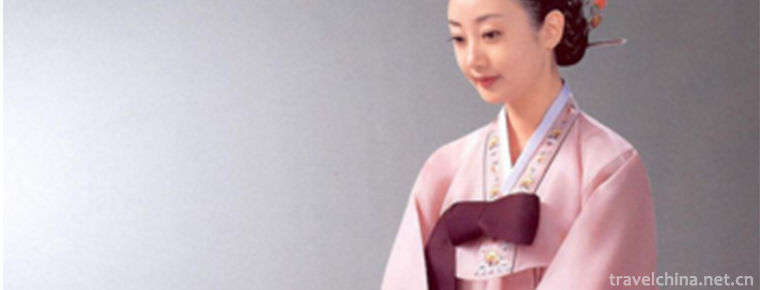
-
Online Shopping
Online shopping is to retrieve commodity information through the Internet, and send out shopping requests through electronic order forms, then fill in the number .
Views: 218 Time 2018-11-13 -
Dongguan Longfeng Villa Film and Television Resort
Longfeng Villa Film and Television Resort officially opened on April 18, 2005. Since its opening, it has developed from a single tourist attraction into a large-scale theme wedding dress shooting base.
Views: 258 Time 2019-02-03 -
Memorial of Song Qinglings Former Residence in Shanghai
Song Qingling's former residence in Shanghai is the place where Song Qingling lived and lived for a long time. Qingling came to live here in the spring of 1949 and ushered in the liberation of Shangha.
Views: 154 Time 2019-02-13 -
Xishan Scenic Spot Suzhou
Xishan is the abbreviation of Xidongting Mountain. It is 11 kilometers wide in North and south, 15 kilometers long in East and west, and 79.8 square kilometers in area..
Views: 202 Time 2019-02-25 -
Fengyang folk songs
Fengyang folk song is a traditional folk song in Anhui Province. Fengyang folk song in Fengyang flower drum is one of the important components of Fengyang folk song.
Views: 207 Time 2019-04-29 -
The official will ring Gong
Official Guild gongs are widely spread in rural areas of Eastern Henan Province. It is a traditional percussion instrument with brass gongs as props. It has a history of more than 300 years.
Views: 100 Time 2019-05-01 -
Legend of the Ancestors of the Loba Nationality
The legend of the ancestors of the Loba nationality is an organic part of the life of the Loba people, a mirror of the Loba society and a way of existence of the folk life of the Loba people..
Views: 102 Time 2019-05-15 -
Pucheng Folk Song
Shaanxi folk song is the continuous interaction, integration, creation, development and transmission of various artistic forms among the working people in the production practice and social practice o.
Views: 152 Time 2019-06-09 -
Tujia Nationalitys Quinone
"Tujia Diaoqu" is not only a wind instrument with peculiar structure, but also a genre of folk songs. At the same time, in Western Hunan, it is also the name of common music cards shared by .
Views: 141 Time 2019-06-23 -
Bengbu University
Bengbu College (Bengbu University) is a state governed country. Ministry of Education The approved one is mainly work oriented, with a coordinated development of engineering, science, management, lite.
Views: 157 Time 2019-11-07 -
Yuchan mountain
Yuchan mountain is located next to Luxian County, Luzhou City, Sichuan Province. It is named for its mountain shape and stone like shape. Yuchan mountain has always been famous in South Sichuan for its secluded mountains, strange stones, beautiful waters and many cultural relics. .
Views: 343 Time 2020-10-15 -
Ganzi milk dregs
The traditional biscuit snack "Tui" is made of milk dregs and butter. And made from milk dregs. After the milk i.
Views: 198 Time 2020-12-06

